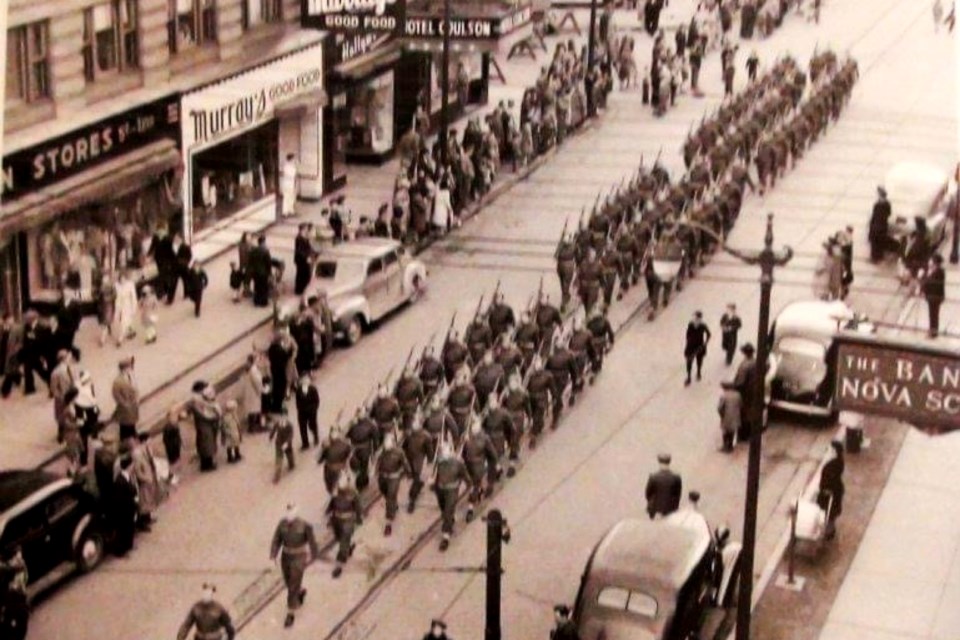On Nov. 11, proud citizens stood in silence, some shivering under overcast skies in the park in Coniston (and other places all across Canada). The gunfire that gave birth to the day they are marking has been silent for the last 105 years.
This year’s Remembrance Day ceremonies have now become a memory unto themselves, and I hope that everyone reading this was able to participate in a ceremony at their local Cenotaph or Legion branch.
For this edition of Memory Lane, I am endeavouring to let the words of our contributors speak their tribute as much as possible. I am confident that the majority of readers would concur with Audrey Villeneuve when she wrote, “I am and are very grateful for the sacrifices that (they) made for us to have a better world. We must never forget that. I salute all the men and women that fought for our freedom. We must never forget them.”
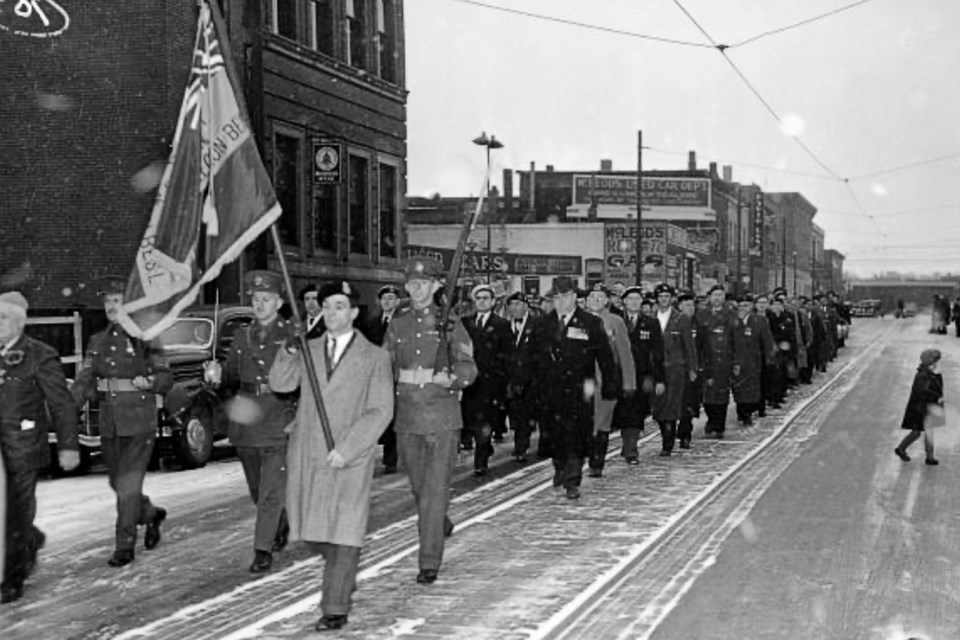
Many of our readers wrote in describing their joyful (yet somber) memories of the yearly ritual with which they partook in honouring the veterans. And, the vast majority of those memories occurred at the First World War cenotaph at Elm and Lorne Street, which figured prominently in many of the photos accompanying our previous article.
Bonnie Bray recalls that she “attended services there every year from a toddler until a teenager when the new cenotaph took over.” D’Arcy Laplante, as well, “spent many a Remembrance Day when I was young there. It was quite a ceremony in the early 1940s.”
Countless readers, such as Bert Hydra, recalled the armies of schoolchildren who were trooped down to attend every Remembrance Day ceremony. Charles Booth wrote that he remembers “every classroom from the Elm Street Public School, grades one to eight, would be brought down to the cenotaph to observe the ceremonies.”
Sandra Basso harkening back to Remembrance Services from around 1949-1954 wrote in that for “many years we walked from College Street Public School at the top of College Street to the bottom under the trestle then up the street to the cenotaph for service. We were taught respect and every one of us were quiet during the whole 'freezing' time and then we all walked back again in an orderly fashion. I miss that time.”
Not only did the schoolchildren of those days remember their participation, but various youth organizations (especially those with ties to the military) would always be included in the pomp and circumstance of the day. Kevin de Groot “always participated in the November 11th ceremonies with his Sea Cadet Corp.” And, Todd Martin “remember(s) many November 11th (at the Cenotaph) when in the Navy League” for which he felt “it was an honour.”
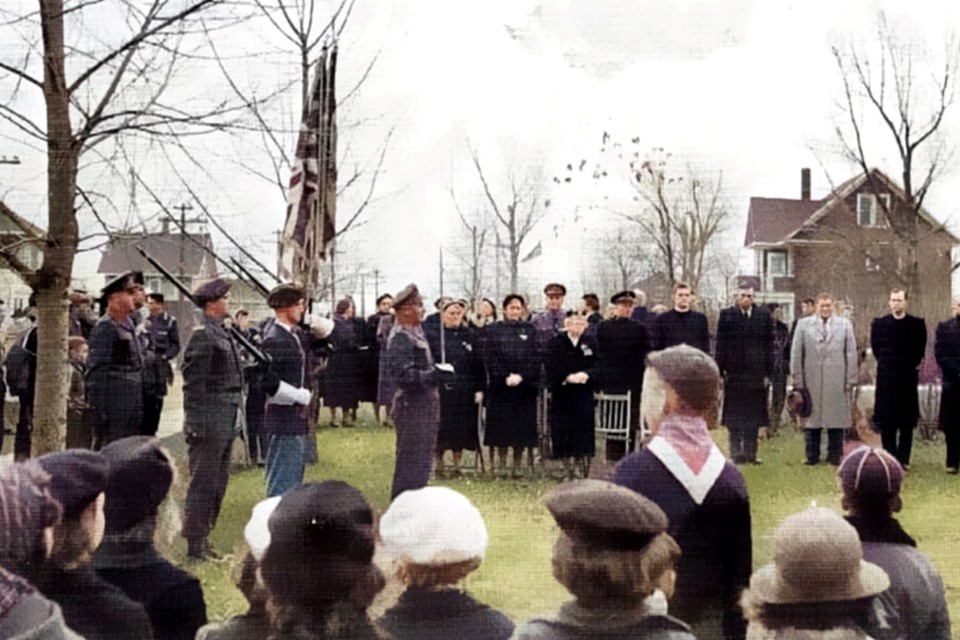
Many Remembrance Day ceremonies over the years (though not all) have included a parade, which would usually be comprised of a combination of veterans and current military, service groups and community groups that ended with the ceremony at the Cenotaph.
Debbie Watson “remember(s) watching these parades at the corner of Brady & Minto when (she) was very young.” Tim McGregor commented to say that his “Mom was in the parades with the Blue Saints and her batons.”
In his reflections on the past, reader Merle Smith lamented the drop in the number of participants at ceremonies as years have passed, but also reminded us of the harsh environments which soldiers have suffered through.
“Everyone turned out to Remembrance Days in the olden days. Weather never stopped us … Soldiers who fought and died did not only fight on nice days. Standing in the cold rain makes you think of what all those young people fought for which is the freedoms we have today,” Smith wrote.
One of the regular contributors at the Sudbury Then and Now Facebook Group, Stephen MacLean, in his comments, paints a vivid picture of the sights and sounds (the true poetic “feel” if you will) of being in the middle of a Remembrance Day ceremony.
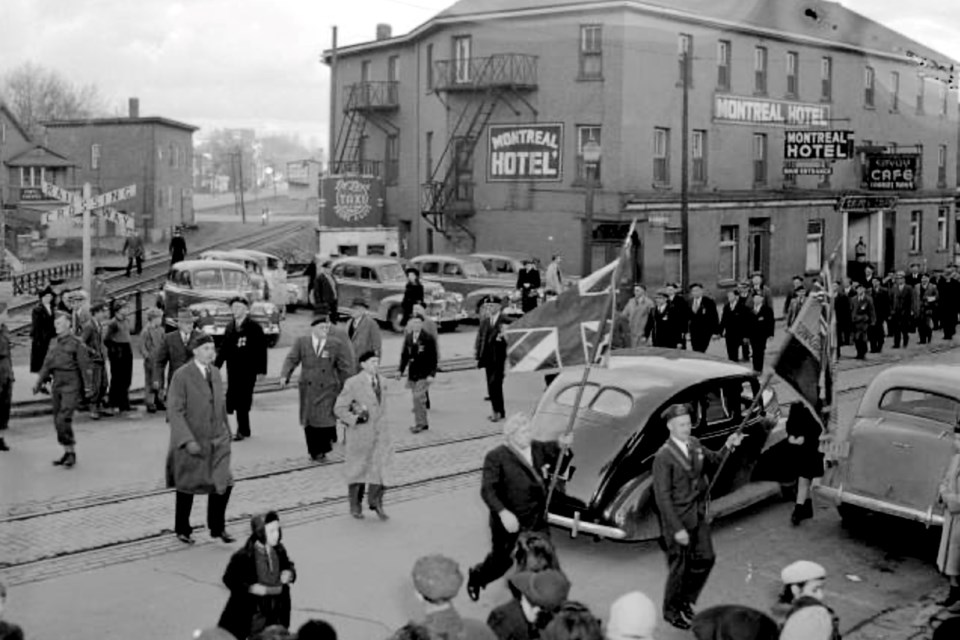
In a comment related to the old First World War Cenotaph, he writes that he “love(d) seeing their (the veterans, the marchers) breaths and the dusting of snow turning to slush beneath their trampling feet” as he can remember at least one time attending there as a youth in the seventies.
However, he remembers many more at the Memorial Park cenotaph, since his father had served in Korea from 1950-52. He writes, “I can hear the snow crunching beneath my feet and feel the chilled air as all assembled stand soldier still, listening intently — the whine and wail of the bagpipes, commanders shouting, the rifles clicking before shots crack, and the lone bugle.”
Just as the day was very important to Stephen MacLean, it was equally significant for reader Stewart Doran. “Remembrance Day was always an important day to my family growing up,” he wrote. “At one time, when my father was still involved at the armouries, he blew Taps at the service.”
Another reader, Linda Derkacz, wrote in that, like Stewart Doran’s father, her husband held the important honour of playing the bugle during the yearly ceremonies. As she described it, “When my husband was a young boy he joined the Capreol Legion band. They gave him a bugle to learn on. As the years went by, the band no longer in existence and he still owning the bugle, my husband played the Last Post & Reveille for many Legion member funerals in the Sudbury region (and) for many years, every Remembrance Day celebration, he was the bugler at the cenotaph.”
She continued, “I recall some days were so cold standing there for the service. But in the cold or snow the service still depended on his bugle playing. Many Legion members attended marching from the Legion to the cenotaph, towns folks & school children also. Depending upon when other Legions held their event, he also played at the Falconbridge & Val Caron Legions.”
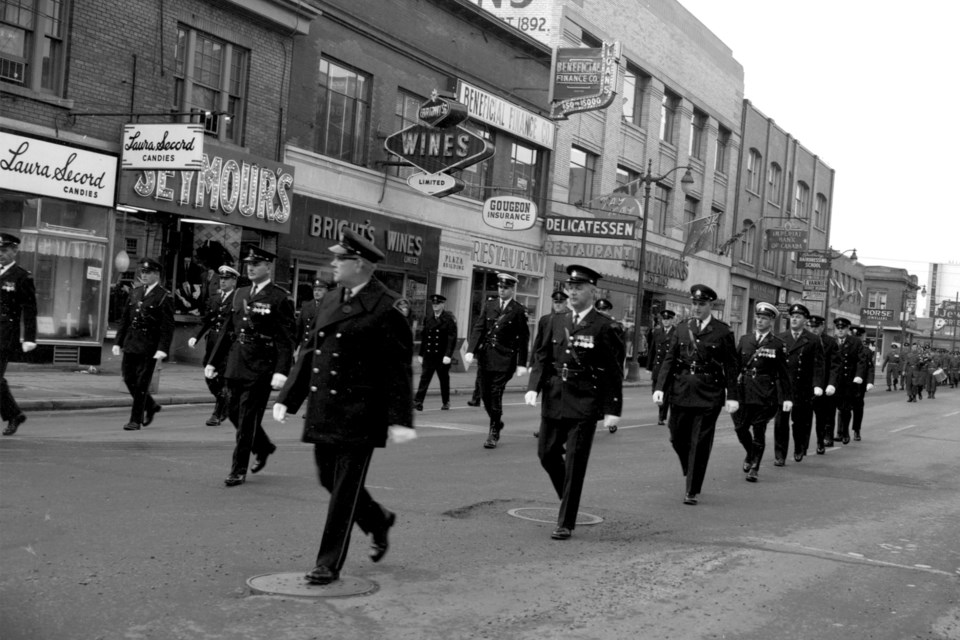
In the end, his dedication did not go unrecognized, “almost 60 years later knowing he would no longer play the bugle and the cadets having their own bugler, he returned the bugle back to the Capreol Legion where they had it mounted in a see-through box on the wall with his name on it … acknowledging his dedicated service for those who dedicated their lives.”
Stephen MacLean (our poetic commenter quoted above) also shared a beloved poem that his late mother, Julia Eckert-MacLean wrote in 1974. It was regularly published in the newspaper for many years and continues to be published online locally regularly around Nov. 11.
At the City’s Remembrance Day ceremony that year, his mother was standing with his Korean War veteran father, and their five children (one of whom later served for years including three tours in Afghanistan) at the cenotaph in Memorial Park when she happened to notice a veteran nearby, dishevelled and older, but as the ceremony moves on, she imagines him as he once was before going off to war. It’s a powerful poem.
You can read Open Letter To An Old Soldier here as Sudbury.com often reprints it around Nov. 11.
Well, dear readers, the final notes of “The Last Post” have sounded and our parade of memories has dispersed for another year. Thank you to everyone who shared their memories and photos of such a solemn occasion. In the words of poet Laurence Binyon spoken each year at this time: “At the going down of the sun and in the morning. We will remember them.” And, we will see you back here again in two weeks with another timely topic.
Jason Marcon is a writer and history enthusiast in Greater Sudbury. He runs the Coniston Historical Group and the Sudbury Then and Now Facebook page. Memory Lane is made possible by our Community Leaders Program.
